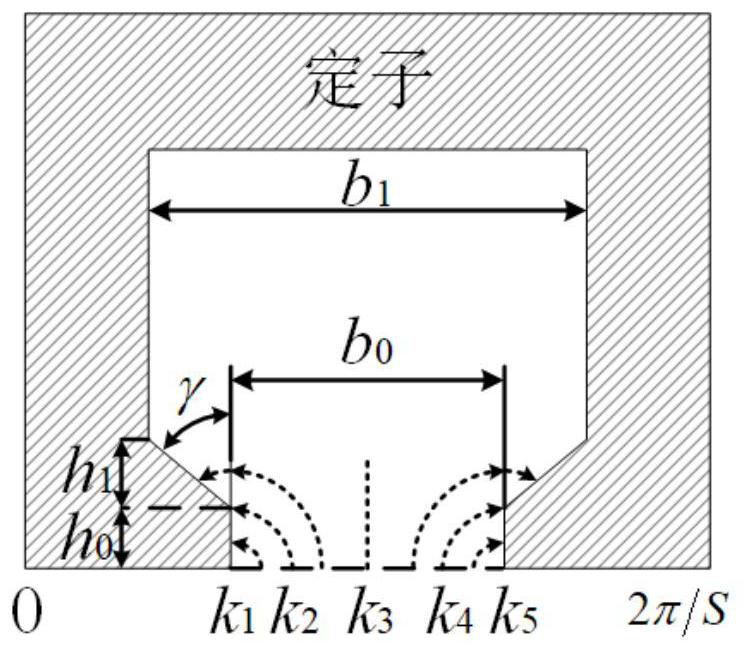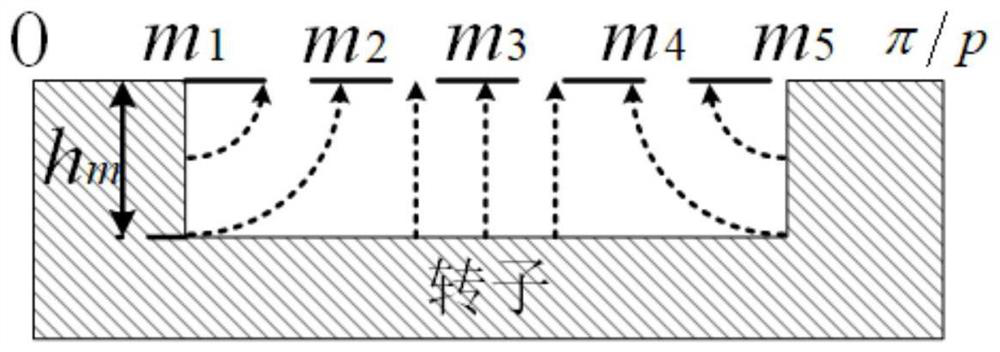Torque analysis method of synchronous reluctance motor considering magnetic saturation
A technology of synchronous reluctance motor and analytical method, applied in the field of electromagnetic field calculation, to achieve the effect of improving accuracy and efficiency
- Summary
- Abstract
- Description
- Claims
- Application Information
AI Technical Summary
Problems solved by technology
Method used
Image
Examples
Embodiment Construction
[0043] The following will clearly and completely describe the technical solutions in the embodiments of the present invention with reference to the drawings in the embodiments of the present invention.
[0044] like figure 1 It is a flowchart of the torque analysis method, and the specific steps of the analysis method are shown below.
[0045] Step 1. According to the winding function theory, the magnetomotive force of the stator is calculated. The winding function of the synchronous reluctance motor can be expressed as: where N h Indicates the h-th harmonic of the stator winding, θ is the angle relative to phase A in the stator coordinate system; its current can be expressed as: I A (ωt)=I m cos(ωt-δ), where I m is the current amplitude, ωt is the instantaneous rotor position, and δ is the current angle measured from the d-axis; then the magnetomotive force of the stator can be expressed as:
[0046]
[0047] where F sh is the h harmonic amplitude of stator magnetom...
PUM
 Login to View More
Login to View More Abstract
Description
Claims
Application Information
 Login to View More
Login to View More - R&D
- Intellectual Property
- Life Sciences
- Materials
- Tech Scout
- Unparalleled Data Quality
- Higher Quality Content
- 60% Fewer Hallucinations
Browse by: Latest US Patents, China's latest patents, Technical Efficacy Thesaurus, Application Domain, Technology Topic, Popular Technical Reports.
© 2025 PatSnap. All rights reserved.Legal|Privacy policy|Modern Slavery Act Transparency Statement|Sitemap|About US| Contact US: help@patsnap.com



